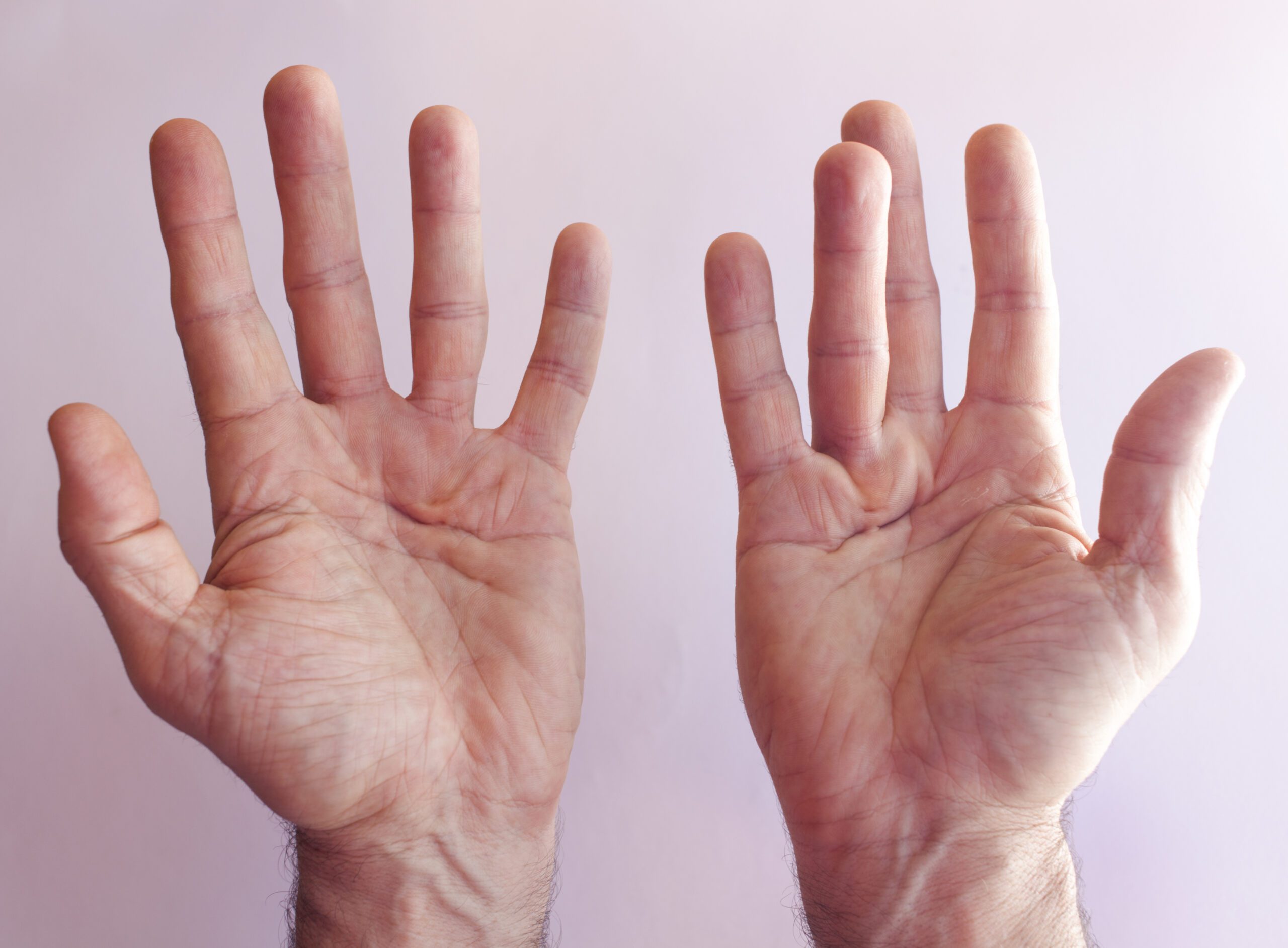
Plastic and reconstructive surgeon Dr. Stephen Lex describes key differences between two common hand problems: trigger finger and Dupuytren’s contracture
Trigger finger and Dupuytren’s contracture are both hand conditions that can affect your fingers, but they have different causes and symptoms.
Trigger finger, also known as stenosing tenosynovitis, occurs when the tendons in your finger become inflamed and swollen, causing your finger to catch as you move them or become stuck in a bent position. The condition typically affects the thumb, middle, or ring fingers, and is characterized by a popping or clicking sensation when the finger is straightened or bent. The underlying cause of trigger finger is not always clear, but it can be associated with repetitive hand movements or certain medical conditions such as rheumatoid arthritis or diabetes.
By contrast, Dupuytren’s contracture is a common hand condition that causes the fingers to become permanently bent towards the palm. It is caused by the thickening and tightening of the tissue beneath the skin in the palm, which can lead to the formation of knots or cords. The condition typically affects the ring and little fingers and is more common in men and people of Northern European descent.
While both trigger finger and Dupuytren’s contracture can cause fingers to become bent, trigger finger is characterized by a locking or catching sensation while moving the finger, and is typically caused by tendon inflammation, while Dupuytren’s contracture is characterized by permanent finger flexion and is caused by thickening and tightening of the tissue beneath the skin in the palm.
Trigger Finger Overview
Trigger finger occurs when the tendon sheath, which surrounds and protects the tendon, becomes inflamed or thickened, causing the tendon to become stuck in the sheath.
Symptoms
Classic trigger finger symptoms include a popping or clicking sensation when moving the affected finger, as well as stiffness, pain, and a sensation of locking or catching in the finger. There will often be tenderness in the palm at the base of the affected finger. These symptoms may be more pronounced in the morning or after periods of inactivity.
Risk Factors
Risk factors for developing trigger finger include repetitive hand movements, such as those required in certain occupations or hobbies, as well as medical conditions such as diabetes or rheumatoid arthritis. There is a strong correlation with carpal tunnel disease as well.
How Trigger Finger is Diagnosed
Diagnosis of trigger finger is typically based on a physical exam and medical history, although imaging tests such as X-rays or ultrasound may be used to rule out other causes of finger pain or stiffness.
Trigger Finger Treatment
Treatment options for trigger finger include non-surgical interventions such as rest, splinting, and anti-inflammatory medications. If non-surgical treatments are not effective, corticosteroid injections may be used to reduce inflammation and improve finger movement. In some cases, trigger finger release surgery may be necessary to release the tendon sheath and restore normal finger movement. We perform trigger finger release as an outpatient procedure at our accredited surgery center in Flagstaff, Arizona.
Dupuytren’s Contracture Overview
Dupuytren’s contracture is a hand deformity that occurs when the tissue beneath the skin of the palm becomes thick and tight, causing one or more fingers to curl inward. This condition usually affects the ring and little fingers, but it can also affect the middle finger.
Symptoms
Dupuytren’s contracture symptoms can vary in severity but typically include a thickened and puckered skin on the palm of the hand, as well as a firm lump or cord that can be felt beneath the skin. It is typically a painless disease. Pits in the palm can also occur early in Dupuytren’s disease. As the condition progresses, one or more fingers may become progressively bent or curled, making it difficult to perform everyday tasks such as grasping objects or typing. Some patients will also have nodules on the bottom of their feet (Ledderhose nodules) or other associated symptoms.
Risk Factors
The exact cause of Dupuytren’s contracture is unknown, but it is more common in men over the age of 40, in individuals of Northern European ancestry, and in individuals with a family history of the condition. It is not caused by activity or lifestyle choices.
Dupuytren’s Contracture Treatment
Our treatment options for Dupuytren’s contracture depend on the severity of the condition and the degree of impairment it causes. In mild cases, we may recommend observation – especially if the condition doesn’t interfere with daily activities. However, if the deformity is more severe, treatment may include splinting or the use of a device to stretch the affected finger or fingers. We may also recommend collagenase injections to dissolve the cord that is causing the finger to curl.
If the condition is more advanced or if other treatments are not effective, then surgical intervention is typically necessary. During this quick procedure, we remove the thickened tissue and/or release the tight bands of tissue that are causing the finger to curl. We perform outpatient fasciectomies to treat Dupuytren’s contracture at our accredited surgery center in Flagstaff, Arizona.
Are you experiencing hand numbness, pain, or weakness? Book your hand consultation today.
Our team of board-certified plastic, reconstructive, and hand surgeons at Plastic Surgeons of Northern Arizona will answer your questions and discuss your symptoms and treatment options.




